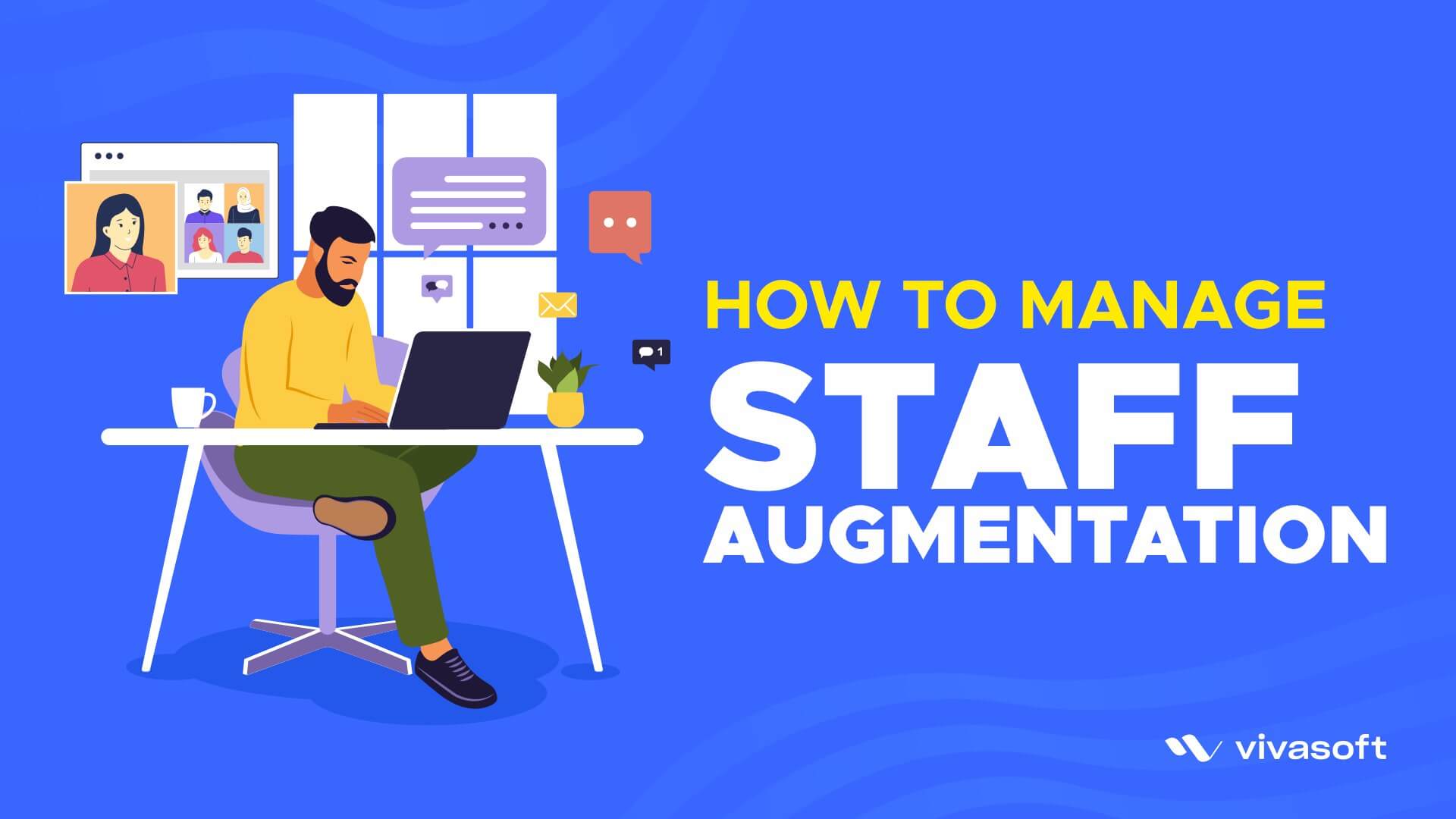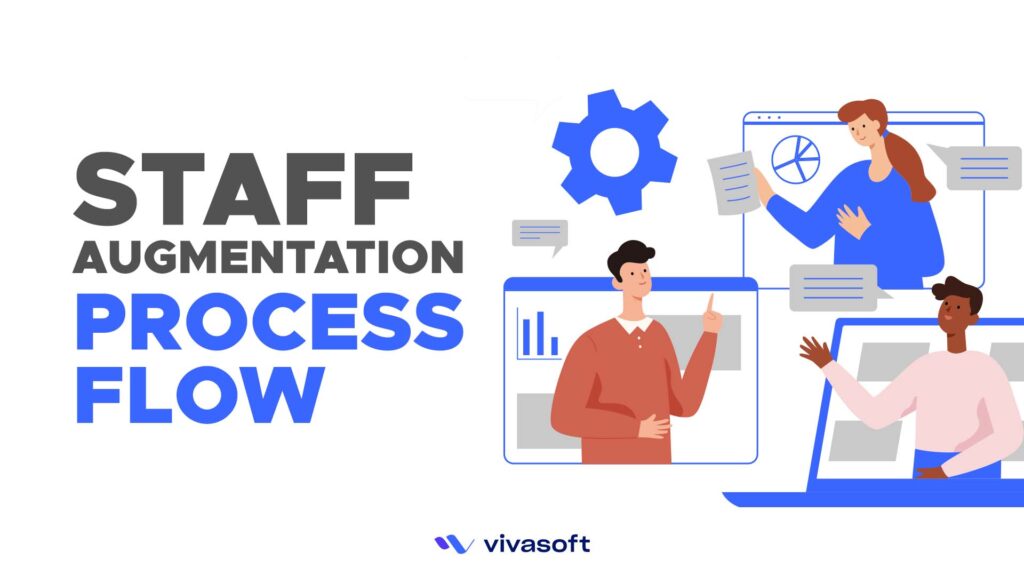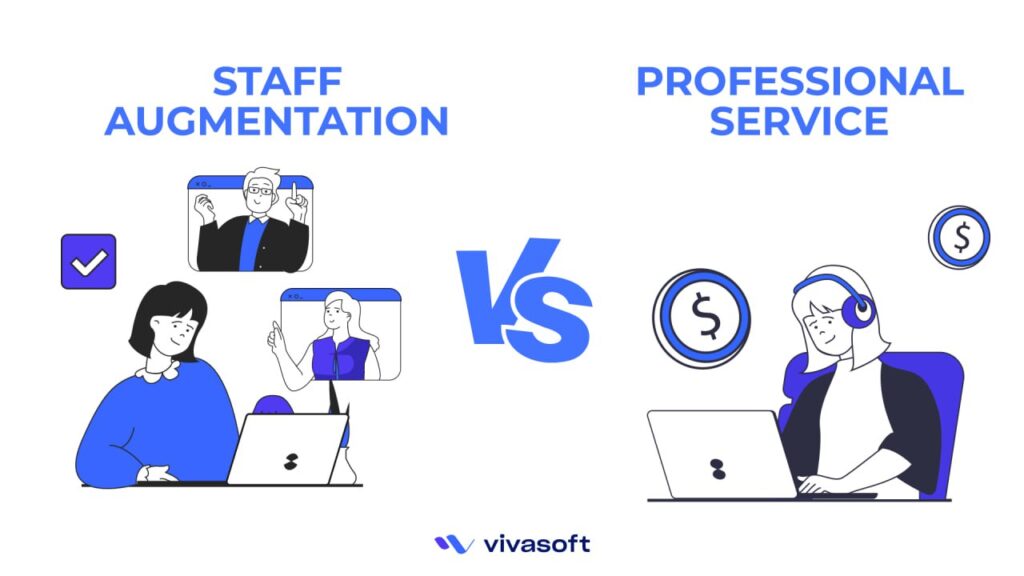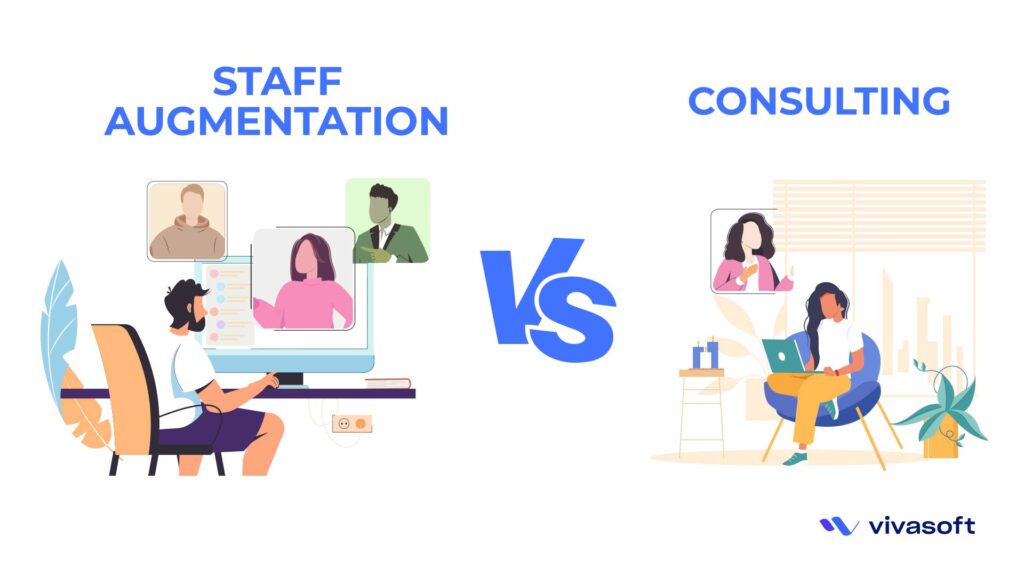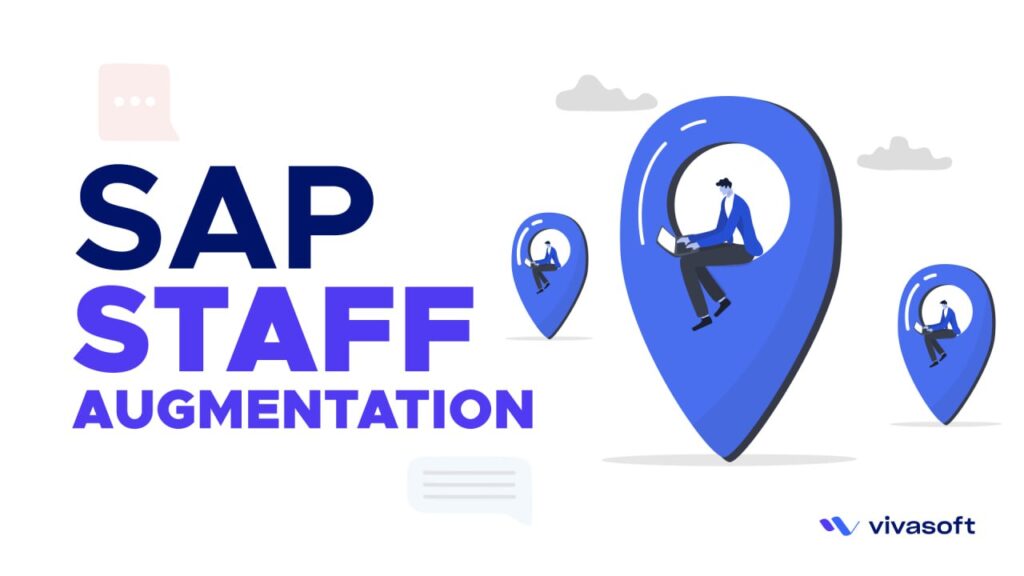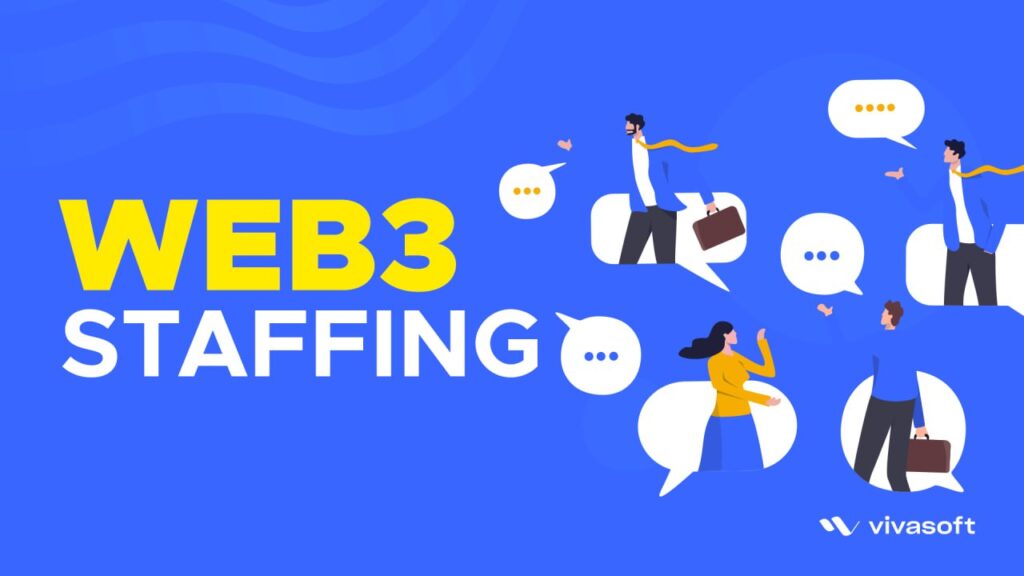Staff augmentation is crucial to adjust to changing market conditions and scale projects. But things aren’t always easy. Challenges and complexities can arise. That’s why you should know how to manage staff augmentation.
Staff augmentation is the strategic practice of adding external professionals to your in-house team to meet specific project needs. Over the last five years, there has been a 67% surge in demand for staff augmentation services. The global IT outsourcing market was valued around 93 Billion US Dollars before 2019. During the Covid-19 pandemic situation and after that the stat rose dramatically. It has come to nearly 270 Billion US Dollars and is increasing. Researchers are expecting IT staff augmentation will be worth over 550 Billion US Dollars by 2030.
Planning for Staff Augmentation

Planning well is the most important part when outsourcing staff or specific skills. Here are the 3 things to consider while planning for staff augmentation:
- Determine your staffing needs: Do you need to fill specific skill gaps or you are in shortage of employees for the project? Start by identifying the gaps in your current team. Determine which projects or operations need additional expertise or people. This understanding will help you plan the augmentation process.
- Identify the roles and skills required: Once you’ve pinpointed your needs & gaps, define the roles and skill sets required for each project or task. Be precise while identifying job roles. Because this will help you find the perfect fit among external professionals.
- Budgeting for staff augmentation: Plan your budget strategically. Consider the costs of hiring external staff and any associated expenses. Well-planned budgets ensure the maximum ROI.
Finding the Right Talent

Methods for Finding Qualified Professionals
Online Job Platforms: Check out popular job platforms like Indeed and LinkedIn. Also, explore websites that are specific to your field. These platforms host a vast pool of professionals actively seeking opportunities. You can filter candidates based on experience, skills, and location. It is a very convenient choice.
Professional Networks: You can use your industry connections and professional network for talent. Engage with industry events, webinars, and forums to connect with potential candidates. Your peers may recommend individuals with suitable qualifications.
Personal Recommendations: Personal recommendations are a big thing here. Seek referrals from colleagues, business associates, or trusted acquaintances. They might know talented professionals looking for opportunities and the one you need.
Evaluating Different Sources
Freelancers: Freelancers are ideal for short-term projects or project-specific needs. They provide flexibility and bring a diverse skill set with them. While considering freelancers, check these things out first:
- Review their portfolios.
- Check for relevant experience.
- Assess their ability.
- Check if they can work independently.
Agencies: Agencies can provide various talents. They can be a one-stop-shop for your staff augmentation needs. Check if the agency has a proven track record of delivering quality work and meeting project deadlines. Opt for references and case studies. These are valuable indicators of their capabilities.
Outsourcing Companies: Outsourcing companies provide end-to-end project development solutions. They can also provide project management solutions. They must be evaluated carefully before hiring. When evaluating these firms, check their reputation in your industry. Client reviews and testimonials give insight into their performance and ability to meet the specific requirements.
Conduct Interviews and Assessments
By conducting structured interviews you’ll gain a deeper understanding of the candidates. Also, you will learn their suitability for your team and specific projects. Prepare a list of well-defined questions for your preferred position. Technical questions and communication skills tests should be included in this procedure. Check their compatibility with your team’s culture and characteristics.
Assessing practical skills and on-the-job aptitude is necessary. Assign practical tasks or simulations that replicate their job challenges. This process gives you invaluable insights into their capabilities.
Onboarding and Integration
The key to successfully integrating new employees is good onboarding. It’s not just about paperwork and introductions. It’s all about preparing for a successful and productive journey. A smooth onboarding process makes new employees feel welcome and clarify their jobs. Thus, they swiftly become valuable contributors to your team’s objectives.
How to Create a Seamless & Strong Onboarding Process
- Start with detailed paperwork that defines the company’s rules, policies, and expectations.
- Provide complete tool, system, and project methodology training to new employees.
- Use experienced team members as mentors to help newcomers adjust.
- Introduce new employees to the culture and values of your business. Do it through team-building activities and virtual or in-person meetups.
- Open feedback channels in the first weeks for timely support and adjustment.
A welcoming workplace is key to successfully integrating new employees into your company. In-person or remote team-building activities help members get more comfortable with one another. Clear communication channels and seminars on business culture promote a smooth integration. Consider these factors to integrate recruits into your team. This will improve their collaboration and shared success.
Communication and Management
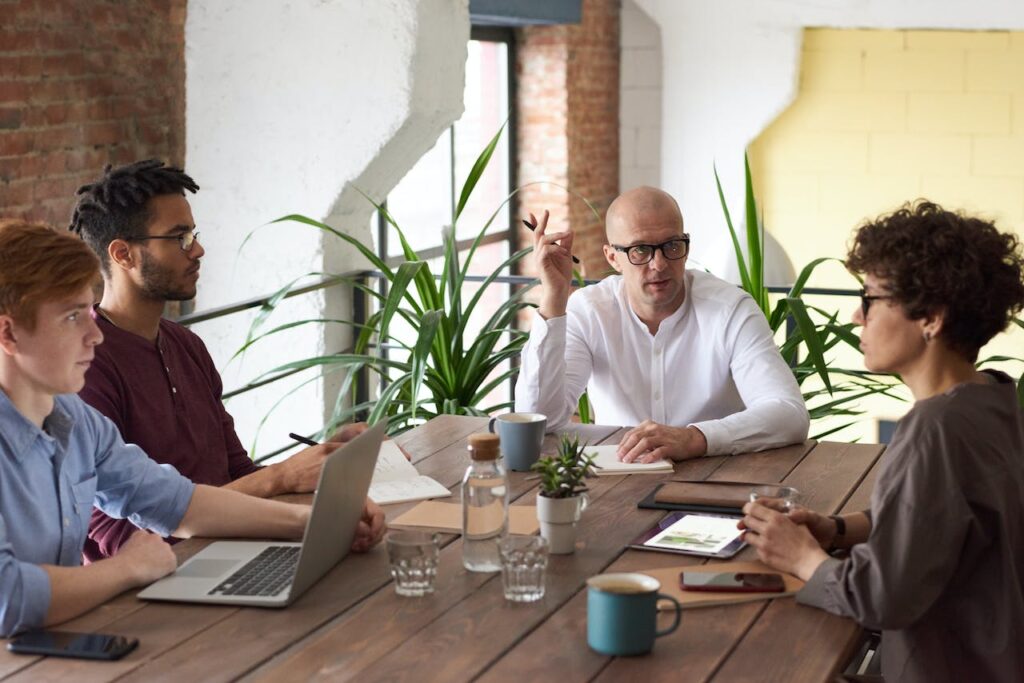
Establish Effective Communication Channels
Teams need clear ways to talk to each other in order to work well together. This improves transparency, collaboration, and understanding. In staff augmentation, team members may be geographically dispersed. That’s why frequent communication becomes even more critical. So, you need to make sure to establish effective communication channels to get good results.
How to Do It:
- Utilize Collaboration Tools: Use platforms like Slack, Microsoft Teams, or Asana. They provide constant, streamlined communication. Keep the entire team connected.
- Regular Check-Ins: Schedule regular check-ins, either virtually or in person. Discuss progress, challenges, and goals.
- Open-Door Policy: Digitally, encourage an open-door strategy. Make it easier for team members to share their ideas and concerns.
Define Roles and Responsibilities
Well-defined roles and job responsibilities are like a map to the team. They coordinate, clarify, and make sure everyone knows their duty. Reassessing and changing these positions keeps the team flexible for project needs. This makes sure that the project runs smoothly and consistently.
Set Clear Expectations and Performance Metrics
The outputs, deadlines, and quality standards should be made clear. Thus, team members will all understand what is expected of them on a project. A weekly progress report and success metrics guarantee that the team is aligned with the overall goals. Regular assessments against these metrics provide opportunities for feedback and improvement. This will eventually lead to project success.
Let’s imagine a case where a software development team is engaged in a staff augmentation project. The project is to develop a fresh mobile app for a client. In this case, the following could be how the success metrics are set up:
- Development Timelines: Set clear deadlines for different phases of the project. This includes design, coding, and testing. You can set the goal of finishing the first design in two weeks, the coding in four weeks, and the tests in three weeks.
- Bug Fixing Rate: Track bug identification and fix rates to evaluate coding efficiency. Fixing 95% of bugs that are reported within 48 hours could be an objective.
- Code Quality: Utilize coding tools to assess the quality of the code produced. for example, Maintain a 90% coding accuracy requirement.
- Client Satisfaction: Consider client feedback as a key metric. Check how the employees are doing with the clients. Regularly assess client satisfaction through surveys or direct communication. Aim for a satisfaction rate of 90% or higher.
- Meeting Project Budget: Keep an eye on how much the project costs compared to the budget. The metric here is to ensure that the project stays within the allocated budget. There should be a variance of no more than 5%.
Handling Challenges of Staff Augmentation

Common Challenges & Issues
Communication Gaps: Differences in time zones, variation in culture, or language barriers can hinder effective communication. It leads to misunderstandings and delays in project completion.
Skill Mismatch: If the hiring procedure isn’t thorough, the skills needed may not match. And those possessed by the augmented staff will face a big issue.
Integration Issues: Integration of external professionals into the team without planning and assistance can lead to serious challenges. It affects understanding team dynamics, roles, and collaboration methods.
Unclear Expectations: Ambiguous project goals or poorly defined expectations creates confusion. Which eventually impacts the team’s ability to meet project objectives.
Security Concerns: Sensitive data could be lost if cybersecurity measures aren’t strong enough. This can lead to security breaches and potential damage to the project.
Turnover of Augmented Staff: Job dissatisfaction, uncertain career paths, or business culture mismatches can affect the augmented staff. These things lead them to seek alternative opportunities.
Budget Overruns: Unexpected project complexity or poorly defined budgets can strain finances. Which will impact the overall success of the project.
Cultural Differences: Misunderstandings can happen when work culture and habits are different. Teamwork and project coherence suffer for this.
Solutions and Best Practices
Regular and Clear Communication: Establish regular communication channels and conduct virtual meetings. Use collaboration tools to bridge time zones and language gaps.
Thorough Skills Assessment: Implement a complete verification process. This includes technical assessments and thorough interviews. Ensure a precise match between required and available skills.
Strategic Integration Planning: Develop a comprehensive integration plan, assign mentors, and prepare team-building efforts. This will help the extra staff to fit in more easily.
Detailed Project Scope and Expectations: Clearly define goals, standards, and objectives for the project right from the start. Everyone on the team will have a better understanding of the situation.
Enhanced Cybersecurity Measures: Invest in cybersecurity protocols. Regular audits and training can help reduce potential security issues.
Employee Engagement Initiatives: Implement activities like professional development opportunities, mentorship programs, and clear career advancement paths. These things enhance job satisfaction of the employees. This is applicable for both your in-house team members and augmented staff.
Thorough Project Budgeting: Conduct a thorough project analysis before budgeting. Consider potential challenges and unexpected complexities. Allocate resources accordingly.
Cross-Cultural Training: Provide cross-cultural training to create awareness and understanding among team members. This will help to create a collaborative and friendly work environment.
Legal and Compliance
Legal considerations and compliance are essential for unexpected situations.
Legal Considerations, Contracts, and Agreements
Staff augmentation legality requires well-drafted contracts and agreements. These documents serve as the compass. They control your company’s relationship with the augmented staff. Clear and comprehensive contracts should outline the following things:
- Scope of Work: Detailed clarification of the roles, responsibilities, and objectives expected from the augmented staff.
- Duration of Engagement: Specify the start and end dates of the staff augmentation engagement. Avoid all kinds of ambiguity.
- Confidentiality Clauses: Include clauses to protect sensitive information and intellectual property. This is to safeguard the interests of both parties.
- Payment Terms: Clearly define the payment structure, including rates, billing cycles, and any additional costs.
- Termination Conditions: Both parties should have the rights to terminate the agreement under specific circumstances. Define the circumstances under which either party can terminate the agreement.
Ensure Compliance with Labor Laws and Regulations
To avoid legal storms, It’s essential to stay informed about the relevant laws. Here are some important laws regarding to staff augmentation:
Fair Labor Standards Act (FLSA): The FLSA sets standards for minimum wage, overtime pay eligibility, recordkeeping, and child labor. This law protects both employers and employees.
Americans with Disabilities Act (ADA): ADA prohibits discrimination against individuals with disabilities in employment. It’s important to make reasonable accommodations for qualified individuals.
Occupational Safety and Health Administration (OSHA): OSHA ensures safe and healthy working conditions. Compliance is very important to keep all staff members safe.
National Labor Relations Act (NLRA): NLRA protects the rights of employees to engage in collective bargaining.
Family and Medical Leave Act (FMLA): FMLA provides eligible employees with unpaid, job-protected leave for specified family and medical reasons. The FMLA regulations are essential to helping employees in need.
Immigration and Nationality Act (INA): INA governs immigration and employment eligibility verification. Following the INA is important to avoid legal issues.
References:
- Fair Labor Standards Act (FLSA): 29 U.S. Code Chapter 8
- Americans with Disabilities Act (ADA): 42 U.S. Code Chapter 126
- Occupational Safety and Health Administration (OSHA): 29 U.S. Code Chapter 15
- National Labor Relations Act (NLRA): 29 U.S. Code Chapter 7
- Family and Medical Leave Act (FMLA): 29 U.S. Code Chapter 28
- Immigration and Nationality Act (INA): 8 U.S. Code Chapter 12
Monitoring and Reporting
Luckily, there are so many staff management tools that were invented in the last few decades. So many of them can be used for managing staff augmentation. For proper monitoring and reporting using these digital tools is essential. Here are some tools regarding to manage staff augmentation:
Tools: Asana, Jira, Monday.com
Uses:
- Facilitates project and task creation with assigned responsibilities.
- Offers visual timelines for tracking project progress.
- Allows for real-time collaboration and file attachments.
- Facilitates collaboration with file sharing and communication features.
Tools: Tableau, Google Analytics, Microsoft Power BI
Uses:
- Connects to various data sources for interactive dashboards.
- Offers in-depth data visualization for performance analysis.
- Provides real-time updates and collaboration capabilities.
- Customizable reports allow a focus on specific metrics.
Tools: Hubstaff, Time Doctor, ActivTrak
Uses:
- Tracks time, activity levels, and app/website usage.
- Captures screenshots for visual context of work.
- Generates detailed reports on productivity metrics.
- Tracks time spent on tasks and projects automatically.
- Provides insights into team and individual performance.
Regular Reporting and Feedback Mechanisms
Consistent reporting and providing feedback help to keep track. There are some mechanisms to do that in a proper manner. Here they are:
Weekly Progress Reports: Augmented staff should submit weekly reports detailing completed tasks, challenges faced, and upcoming priorities. The results show what each person and the team has accomplished.
Bi-Weekly Check-In Meetings: Virtual meetings should be scheduled. Where in-house teams and augmented staff will discuss ongoing projects. They will address concerns, and collaboratively solve the problems.
Performance Reviews: These periodic reviews evaluate augmented staff performance. Constructive feedback should be provided. Highlight achievements and suggest areas for improvement.
Employee Surveys: Anonymous surveys examine augmented workers about their experience, work environment, and issues. This helps find problems and deal with them before they happen.
Feedback Loops in Project Management Platforms: Project management tools with built-in comments and feedback features let team members, even augmented staff, give feedback on tasks and projects.
Conclusion
Success lies in strategic navigation for staff augmentation. For proper management use staff management tools, ensure effective communication, and use performance metrics. These principles simplify operations and build a productive team. Now assess your project first for the right staff augmentation. And apply these proven principles strategically as mentioned above. You will manage staff augmentation with no difficulties.




